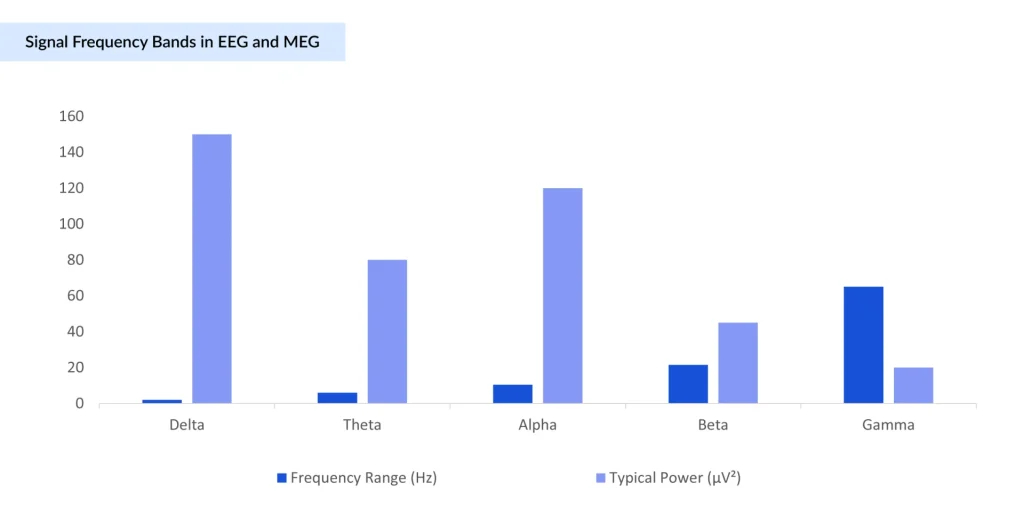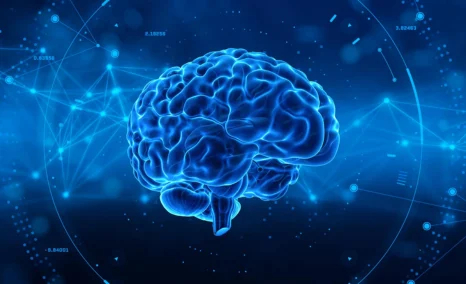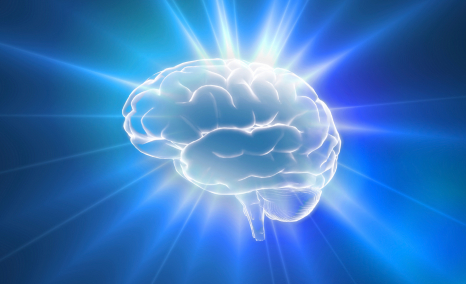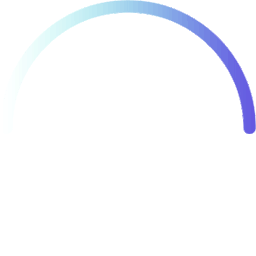Wireless Brain Sensors: Revolutionizing Neuroscience and Healthcare
Oct 28, 2025
Table of Contents
Wireless brain sensors are emerging as a transformative technology in neuroscience and healthcare, offering a new level of precision, comfort, and real-time monitoring for patients with neurological conditions. Unlike traditional wired sensors that limit mobility and can cause discomfort, wireless brain sensors use advanced microelectronics, biocompatible materials, and wireless communication systems to capture and transmit neural data, including brain electrical activity (EEG), intracranial pressure, temperature, and blood flow dynamics.
These sensors play a critical role in diagnosing and managing disorders like epilepsy, Alzheimer’s disease, Parkinson’s disease, stroke, and traumatic brain injury, while also supporting research in brainwave sensor applications, brain-computer interfaces, and wireless mind-reading technology. In clinical settings, they provide minimally invasive solutions for continuous brain monitoring in critical care units and during neurosurgical procedures, enabling physicians to make faster, more accurate decisions. Integration with artificial intelligence and the Internet of Things (IoT) further enhances their potential, enabling remote monitoring, predictive analytics, and personalized treatment strategies. Their lightweight, wireless design improves patient compliance in long-term studies and outpatient care, making them invaluable for both clinical applications and neurological research. As the demand for non-invasive, patient-friendly, and data-rich monitoring tools grows, wireless brain sensors are set to revolutionize neuroscience and healthcare by bridging the gap between cutting-edge technology and human brain health.
Downloads
Click Here To Get the Article in PDF
Recent Articles
- Collagen Matrix FDA 510(k) approval for Fibrillar Collagen Wound Dressing; Roche’s cancer diagnos...
- Medtronic Secures FDA Approval for First-Ever Adaptive Deep Brain Stimulation System for Parkinso...
- Alzheimer’s Treatment: Latest Breakthroughs and Advancements in Therapeutic Development
- Johnson & Johnson MedTech Secures CE Mark for Dual Energy THERMOCOOL SMARTTOUCH™ SF Catheter;...
- Rising of Orphan Drug Development
The Dawn of Wireless Brain Sensing Technology
Wireless brain sensing is one of the most exciting breakthroughs in neuroscience today. In the past, monitoring the brain was difficult because patients had to use large, wired devices connected to bedside machines. These wires made it hard to move freely and limited the ways scientists could study the brain.
The significant change started in 2014 at Brown University, where researchers created tiny, ultra-low-power wireless sensors. These sensors could send large amounts of brain data without restricting the patient’s daily activities. This was a significant step forward because it enabled scientists to study the brain in more natural, realistic settings. Early wireless sensors weighed about 50 grams and required large external receivers. Over time, engineers developed smaller, lighter devices that could be safely implanted in the body. Today’s sensors are made from materials that are well-suited to the body, such as magnesium, titanium, and specialized polymers. These materials help the sensors blend with brain tissue and reduce the risk of inflammation or rejection.
Thus, due to these advances, researchers can now track brain activity more accurately over more extended periods. This opens new possibilities for understanding brain function, diagnosing disorders such as epilepsy and Parkinson’s, and even developing treatments that respond in real time to brain signals.
How Wireless Brain Sensors Work: From Signals to Insights
Neural Mesh Interface: The latest generation includes a neural mesh interface that penetrates brain tissues to record individual neuron impulses and deep brain activity. These ultra-thin devices capture single-cell-resolution data whilst wirelessly transmitting it to an external processing system.
Wireless Transmission: Data transmission via Bluetooth low energy or RFID technology enables seamless communication with smartphones, tablets, or dedicated receivers. This wireless connectivity eliminates infection risk associated with transcutaneous wires whilst providing continuous monitoring capabilities.
Electrocorticography: Sophisticated sensor arrays placed directly on the brain’s cortical surface capture high-fidelity electrical signals with exceptional spatial and temporal resolution. This positioning allows for precise monitoring of specific brain regions whilst maintaining signal integrity.
Signal Detection: Advanced sensors continuously monitor multiple brain parameters, including intracranial pressure, temperature, pH levels, and electrical activity. These “brain waves” represent the fundamental communication patterns between neurons, providing real-time insights into neural function and dysfunction.
Recent innovations include revolutionary micro-scale sensors positioned between hair follicles, utilizing conducting polymers microneedles for high-fidelity extended-duration signal capture without patient discomfort.
Types of Neural Signals Captured by Brain Sensors
Wireless brain sensors are designed to detect different types of signals that the brain produces. These signals vary in frequency, strength, and purpose, and analyzing them helps researchers and doctors understand brain function, diagnose disorders, and guide treatment. The main types of wireless brain sensors include:
Electrical Signals (EEG Signals): These are the electrical impulses that are generated by neurons as they communicate with each other. They are captured when electrodes or microelectrodes detect voltage changes on the scalp or directly inside the brain. Helps in monitoring sleep patterns, detecting epilepsy, studying cognitive processes, and assessing brain activity after injury.
Local Field Potentials (LFPs): These are the electrical signals that reflect the combined activity of groups of neurons in a small brain area. They are captured when implanted microelectrodes measure voltage fluctuations in brain tissue. Helps in understanding movement disorders (such as Parkinson’s), guiding deep brain stimulation (DBS), and studying learning and memory circuits.
Action Potentials (Spikes): These are the brief, high-frequency electrical signals produced by individual neurons when they “fire.” They are captured when tiny implanted electrodes or microarrays can detect these spikes with high precision. Helps in controlling prosthetic limbs via brain-computer interfaces (BCIs), detailed neural mapping, and advanced neuroresearch.
Brain Wave Patterns: These are rhythmic electrical activities of the brain grouped by frequency, such as delta waves, theta waves, alpha waves, beta waves, and gamma waves. Helps in sleep studies, meditation research, cognitive enhancement, and detecting neurological disorders.
Chemical Signals (Neurotransmitter Activity): These are changes in the levels of neurotransmitters such as dopamine, serotonin, and glutamate. They are captured by advanced implantable sensors or biosensors that detect chemical fluctuations in real-time. Helps in studying psychiatric disorders, depression, Parkinson’s disease, and the brain’s response to drugs.
Hemodynamic Signals: These are changes in blood flow and oxygen levels in the brain that indirectly reflect neural activity. They are captured using techniques such as functional near-infrared spectroscopy (fNIRS) or optical sensors integrated with wireless systems. Helps in brain mapping, stroke rehabilitation, and cognitive workload monitoring.

Delta (0.5–4 Hz): Predominant during deep, slow-wave sleep stages and associated with restorative processes. Abnormal delta activity during wakefulness often indicates brain injury, metabolic disorders, or severe neurological conditions requiring immediate clinical attention.
Theta (4–8 Hz): Strongly linked to memory consolidation, spatial navigation, and creative thinking. Enhanced during REM sleep and meditative states, theta rhythms facilitate communication between the hippocampus and the neocortex, supporting learning and memory formation processes.
Alpha (8–13 Hz): Strongly linked to memory consolidation, spatial navigation, and creative thinking. Enhanced during REM sleep and meditative states, theta rhythms facilitate communication between the hippocampus and the neocortex, supporting learning and memory formation processes.
Beta (13–30 Hz): Associated with active, focused thinking and voluntary motor control. High beta activity correlates with anxiety and stress, whilst moderate beta supports problem-solving, decision-making, and conscious cognitive processing in everyday activities.Gamma (30–100 Hz): The fastest brain waves, linked to high-level cognitive functions including conscious awareness, binding of sensory information, and complex problem-solving. Gamma synchronization enables integration of distributed neural processes into coherent perceptual experiences.
| Non-Invasive Vs Invasive Brain Sensors Used in Neuroscience | |
| Non-Invasive Sensors | Invasive Brain Sensors |
| Surface electrodes and MEG sensors capture neural activity from outside the skull, measuring the summed electrical or magnetic activity from millions of neurons simultaneously. Whilst sacrificing the precision of invasive methods, these approaches offer safety, repeatability, and the ability to monitor brain-wide networks without surgical intervention. | Microelectrode arrays, such as the Utah array, penetrate directly into cortical tissue, enabling the recording of individual neurons with extraordinary precision. These systems capture both action potentials from single cells and local field potentials from small neural populations, providing spatial resolution down to tens of micrometres and temporal resolution in microseconds. |
| Safe and reversible recording | Single-unit activity recording |
| Whole-brain coverage possible | High signal-to-noise ratio |
| Suitable for repeated sessions | Precise spatial localization |
| Lower spatial resolution | Surgical implantation required |
| Signal attenuation by tissues | Risk of infection and tissue damage |
Applications of Wireless Brain Sensors in Neuroscience and Healthcare
Wireless brain sensors have revolutionized neuroscience and healthcare by enabling real-time, continuous monitoring of neural activity without invasive wiring. They are used to study brain function, map neural circuits, and understand neurological disorders such as epilepsy, Parkinson’s disease, and Alzheimer’s. In clinical settings, these sensors enable brain–computer interfaces (BCIs) to restore movement or communication in paralyzed patients. Their wireless design enhances patient comfort, mobility, and long-term data collection. Additionally, they support personalized neurotherapy and remote neurodiagnostic monitoring, advancing precision medicine.
| Application Area | Description | Devices | Use Case / Benefit |
| Neurological Disorder Diagnosis & Monitoring | Continuous monitoring and detection of neurological disorders like epilepsy, Parkinson’s, and Alzheimer’s. | REMI Wireless Wearable EEG System (Epitel Inc.) | Real-time seizure detection, cognitive decline monitoring, and sleep disorder diagnosis. |
| Cognitive & Mental Health Monitoring | Tracks mental states, stress, sleep patterns, and mood disorders | Elemind Headband, StimScience Somnee Headband | Sleep improvement, stress management, mood monitoring, personalized interventions. |
| Real-Time Brain Mapping for Neurosurgery | Monitors brain activity during neurosurgery for precise mapping without invasive procedures. | Wireless Stent-Electrode Arrays | Protect critical brain regions during surgery; guide surgical planning. |
| Cognitive Enhancement & Neurofeedback | Supports cognitive training, attention, and memory enhancement through feedback. | GAPses Smart Glasses | EEG-based neurofeedback, biometric recognition, attention & memory training. |
| Brain-Computer Interfaces (BCI) | Enables direct communication between the brain and external devices, assisting paralyzed or disabled individuals. | Stentrode, Neuroelectrics Wireless Brain Helmet | Control prosthetics, wheelchairs, and computers using brain signals; post-stroke rehabilitation. |
| Research & Drug Development | Collects neural data in real-world environments for research and clinical trials. | PiEEG-16 (Raspberry Pi-based EEG device) | Facilitates drug efficacy studies, BCI experiments, and neural research. |
| Wearable & Remote Patient Monitoring | Enables home-based monitoring and telemedicine integration. | SMARTING System (Soterix Medical) | Remote tracking of neural activity, reducing hospital visits, and continuous patient monitoring. |
Key Companies Operating in Brain Computer Interface in Healthcare
The major market players in brain-computer interface for healthcare include Medtronic, Philips, Emotiv, Advanced Brain Monitoring, NeuroSky, Cadwell, and others. These organizations are at the forefront of developing innovative BCI technologies to improve patient monitoring, neurorehabilitation, and brain health. Their products and research significantly advance medical diagnostics, neurofeedback, and non-invasive brain signal analysis. Leading-edge solutions from these companies are helping transform clinical care and patient outcomes in neurology and related fields.

Recent Development Activities of the Wireless Brain Sensors in Neuroscience and Healthcare
- In June 2025, Zeto, Inc., a privately owned medical technology company, announced that its innovative next-generation product, named the ONE, had received 510(k) clearance from the FDA. Zeto ONE is approved for EEG Brain Monitoring across hospital, home, ambulance, and air transport environments.
- In May 2025, Natus Medical Incorporated announced the official launch of BrainWatch™, the highly anticipated point-of-care EEG solution designed to bring the reliability and trust expected from the world’s largest neurodiagnostic company into critical-care environments.
- In April 2025, Precision Neuroscience announced the FDA clearance of the Layer 7 Cortical Interface. It is cleared as a temporary implant (up to 30 days) for measuring and stimulating cortical brain activity. The company stated it is the first wireless BCI device to receive this clearance.
- In March 2025, Epitel, a leader in AI-driven brain health solutions, received another FDA 510(k) clearance for its REMI™ Wireless EEG System, extending its use to infants and children aged one year and older. This approval highlighted the system’s potential to transform neurological monitoring in vulnerable pediatric patients.
- In January 2025, Emotiv, a global leader in EEG technology, unveiled its next-generation EEG Active Noise-Cancelling Earphones. These smart earphones were designed to enhance personal wellness by integrating advanced EEG technology to offer insights into cognitive performance and overall well-being, while delivering exceptional sound quality. The earphones incorporated EEG sensors and AI to provide wellness metrics, track cognitive performance, and support BCI capabilities.
Wireless Brain Sensors in Neuroscience and Healthcare Industry: Market Overview and Dynamics
The global wireless brain sensors market in healthcare was valued at USD 596 million in 2024 and is projected to reach USD 1.1 billion by 2032, growing at a CAGR of 9.05% from 2025 to 2032. Key factors driving this growth include the rising prevalence of neurological and cognitive disorders such as stroke, epilepsy, Alzheimer’s disease, Parkinson’s disease, and traumatic brain injuries, increasing demand for continuous and remote brain monitoring, advancements in miniaturized and wearable sensor technology, and the growing adoption of non-invasive and wireless solutions to monitor, analyze, and modulate neural activity.
In 2024, the North America wireless brain sensors market stands as both the most significant and fastest-growing regional segment worldwide, driven by the high and rising burden of neurological disorders such as traumatic brain injuries (TBI), stroke, epilepsy, Alzheimer’s disease, and Parkinson’s disease. These conditions collectively create a strong demand for advanced brain monitoring and diagnostic solutions. A notable trend is the rapid adoption of miniaturized, wearable, and non-invasive Electroencephalography (EEG) devices, which are increasingly being deployed beyond hospitals into home-care and telehealth settings, enabling continuous monitoring and early detection of neurological events.
Technological innovation remains a cornerstone of the region’s growth. Companies are leveraging Artificial Intelligence (AI), machine learning, and cloud-based analytics to improve real-time data interpretation, predictive modeling, and clinical decision support. The market is also benefiting from the region’s strong push toward personalized medicine and digital health integration, which accelerates the adoption of wireless monitoring solutions across both clinical practice and research domains.
The U.S. dominates the regional market, supported by a robust healthcare infrastructure, strong presence of leading medical device companies, and high levels of R&D investment from both the public and private sectors. Favorable regulatory pathways and reimbursement policies further encourage innovation and adoption, with government agencies and insurers increasingly recognizing the clinical and economic benefits of early neurological monitoring. Canada, while smaller in scale, is also experiencing notable uptake due to rising awareness of brain health and government support for digital health technologies.
Despite its leadership position, the market faces ongoing challenges. The high cost of advanced wireless brain sensors, coupled with disparities in healthcare access, limits broader adoption. In addition, growing volumes of patient-generated health data raise critical concerns around cybersecurity, data security, and compliance with HIPAA and other privacy regulations, requiring continuous innovation in secure data handling. Addressing these hurdles will be essential for sustaining growth and expanding adoption into wider clinical and consumer health applications.
The Europe market for wireless brain sensors is witnessing robust growth, propelled by the rising prevalence of neurological disorders such as epilepsy, Alzheimer’s disease, Parkinson’s disease, and traumatic brain injuries, conditions that are becoming increasingly common among the region’s rapidly aging population. A key driver is the growing preference for non-invasive, portable, and wearable monitoring solutions, with Electroencephalography (EEG)-based devices dominating the segment due to their ability to provide continuous, real-time brain activity monitoring beyond traditional clinical settings.
Technological advancements are reshaping the competitive landscape, with the integration of Artificial Intelligence (AI), machine learning algorithms, and cloud-based analytics enhancing diagnostic accuracy, enabling predictive modeling of neurological events, and facilitating seamless data sharing between clinicians and patients. This shift is strongly aligned with Europe’s broader healthcare digitalization initiatives and the growing emphasis on telehealth, remote patient monitoring, and personalized medicine.
Leading markets such as Germany, the UK, and France are setting the pace for adoption, supported by advanced healthcare infrastructure, high awareness of neurological health, favorable reimbursement frameworks for digital health solutions, and sustained public–private investments in brain research and medical device innovation. Moreover, EU-funded initiatives under Horizon Europe and national-level neuroscience programs are accelerating R&D in neurotechnology, providing a fertile ground for startups and medtech companies to expand their footprint.
However, despite strong momentum, the market faces challenges, including the high upfront cost of sophisticated wireless brain monitoring systems, limited interoperability between devices and healthcare IT systems, and stringent requirements for data privacy, cybersecurity, and regulatory compliance under the General Data Protection Regulation (GDPR) and EU Medical Device Regulation (MDR). Overcoming these barriers will be critical to sustaining long-term adoption and unlocking the full potential of wireless brain sensors across clinical, research, and even consumer wellness applications.
The Asia-Pacific (APAC) wireless brain sensors market is as one of the emerging markets globally, driven by a confluence of rising healthcare demands and rapid technological adoption. A primary driver is the escalating prevalence of neurological disorders such as epilepsy, Alzheimer’s, and traumatic brain injuries across the region’s large and aging population, particularly in major economies like China and India. This trend fuels the need for cost-effective, real-time diagnostic and monitoring tools.
Key market trends center on miniaturization and non-invasive technologies, with a strong focus on wearable Electroencephalography (EEG) devices for both clinical monitoring and consumer wellness applications. Technological innovation in the region is exemplified by developments such as tiny, biodegradable, and wireless implantable sensors developed by research teams in China, designed to reduce the need for invasive surgery and lower infection risks. Furthermore, increasing government investment in medical technology, the expansion of healthcare infrastructure, and the growing adoption of telemedicine and remote patient monitoring are opening new avenues for wireless sensors in home care settings.
However, the APAC market faces significant hurdles, including the challenge of fragmented healthcare infrastructure and the high cost of advanced medical devices, which can limit widespread adoption in less developed areas. Most critically, the industry must overcome substantial data privacy and security concerns surrounding the wireless transmission of sensitive neural data, an issue compounded by the need for regulatory clarity and standardized data protocols across diverse national healthcare systems.
From a solution perspective, the market is segmented into:
- Wireless EEG sensors (headsets and earphones for neurofeedback, cognitive assessment, sleep monitoring, mental health tracking, and neurorehabilitation).
- Wireless fNIRS and MEG sensors (used for monitoring cortical activity, cognitive workload, and neurological disorder research).
- Wearable and semi-invasive neural sensors (epidural or subdural wireless devices for seizure monitoring, motor rehabilitation, and BCI integration).
- Wireless sensor platforms and software (signal acquisition, machine learning-based neural decoding, cloud analytics, and integration with therapeutic or assistive devices).
Integration with AI, machine learning, robotics, and cloud platforms is transforming wireless brain sensors into intelligent systems capable of continuous brain signal monitoring, predictive neurofeedback, personalized therapy, and remote neurorehabilitation. As healthcare increasingly emphasizes patient-centric, precision neurology, wireless brain sensors are becoming essential tools for early diagnosis, real-time monitoring, cognitive enhancement, and the enabling of new therapeutic approaches for neurological and mental disorders.
Wireless Brain Sensors in Healthcare Market Dynamics
Wireless Brain Sensors Market Drivers
- Continuous and Remote Neurological Monitoring: Wireless brain sensors enable real-time monitoring of brain activity for patients with epilepsy, stroke, traumatic brain injuries, and neurodegenerative disorders. This capability supports early detection, remote care, and ongoing neurorehabilitation, driving adoption in hospitals, clinics, and home-based care.
- Advancements in AI and Neural Signal Processing: Integration of AI, machine learning, and cloud-based analytics with wireless brain sensors allows real-time decoding and interpretation of neural signals, improving accuracy in cognitive assessment, neurofeedback, mental health tracking, and BCI-assisted therapies.
- Rising Prevalence of Neurological and Cognitive Disorders: The increasing incidence of stroke, Alzheimer’s disease, Parkinson’s disease, epilepsy, and sleep or mental health disorders is creating demand for non-invasive, wearable, and continuous brain monitoring solutions, boosting clinical and consumer adoption.
- Minimally Invasive and Wearable Solutions: Development of wireless, wearable EEG, fNIRS, and semi-invasive sensors reduces the need for tethered or surgical setups, improves patient comfort, and expands use in clinical, research, and home-care applications.
- Integration with Therapeutic and Assistive Devices: Wireless brain sensors can be integrated with rehabilitation robotics, neurofeedback systems, cognitive training platforms, and smart assistive devices, enhancing patient outcomes, personalization, and engagement in therapy programs.
Wireless Brain Sensors Market Restraints
- Data Security and Privacy Concerns: Wireless brain sensors continuously collect sensitive neural data. Unauthorized access, data breaches, or misuse of cognitive and mental health data raise ethical and regulatory concerns, limiting adoption.
- High Costs and Technical Complexity: Advanced wireless brain sensors require high-resolution electronics, sophisticated signal processing, and AI analytics. The associated cost and technical expertise needed for deployment can be barriers for smaller hospitals, clinics, or home users.
- Regulatory and Ethical Challenges: Non-invasive and semi-invasive wireless neural devices must meet stringent safety, data-handling, and clinical-efficacy standards. Regulatory approvals and ethical considerations around monitoring cognitive and mental functions can slow market adoption.
- Interoperability Challenges with Existing Clinical Systems: Integrating wireless brain sensor outputs with electronic health records, telemedicine platforms, or rehabilitation software can be complex, limiting seamless use in clinical workflows.
Future of Wireless Brain Sensors in Neuroscience
Multi-modal Integration: The future lies in combining complementary sensor modalities—EEG for temporal dynamics, MEG for spatial precision, and selective invasive recording for high-resolution local activity. This hybrid approach will provide unprecedented insight into brain function across multiple scales simultaneously.
Real-Time Algorithms: Advanced machine learning algorithms will enable real-time decoding and adaptation, learning from neural patterns as they evolve and providing immediate feedback for therapeutic interventions, cognitive enhancement, and seamless brain-computer interaction.
Clinical Applications: Next-generation brain sensors will revolutionize the treatment of neurological conditions, restore lost sensory and motor functions, and enable new therapeutic approaches for depression, epilepsy, and neurodegenerative diseases.
Human Computer Symbiosis: The ultimate goal is seamless, bi-directional communication between brain and machine, enabling augmented cognition, direct neural control of digital devices, and even brain-to-brain communication networks that expand human capabilities.
Conclusion
In conclusion, wireless brain sensors are revolutionizing neuroscience and healthcare by enabling real-time monitoring and tracking of brain function. These brain activity sensors, also known as brainwave or neurological sensors, provide powerful insights into cognitive performance, mental health, and neurological disorders.
The wireless brain sensor market is growing rapidly, driven by advancements in wireless medical technology, brain-sensing devices, and neuroscience devices that integrate adaptive or assistive features. Wireless sensory technology enables clinicians and researchers to use brain monitoring devices and solutions outside traditional clinical settings, making it easier to track brain function in real time. With innovations in brain sensor technology, wireless brain sensors are becoming essential tools in the wireless health market, neuroscience devices, and the broader wireless medical sensors market.
They support applications ranging from brain activity tracking and neurorehabilitation to wireless mind-reading technology and patient-centered monitoring. As this wireless detectors market expands, wireless brain sensors and neuroscience devices continue to transform healthcare, enabling safer, more efficient, and personalized neurological care for patients worldwide.

Downloads
Article in PDF
Recent Articles
- Key Updates on Phase 1 Trial of AB-1005 Gene Therapy for Multiple System Atrophy-Parkinsonian Typ...
- From Paper to Pixels: The Advantages and Challenges of Electronic Health Record
- What can be the scope of Medical Marijuana?
- From Wrist to Wellness: The Evolving Landscape of Wearable Medical Devices Market
- How Artificial Intelligence is adding value to the Healthcare sector



